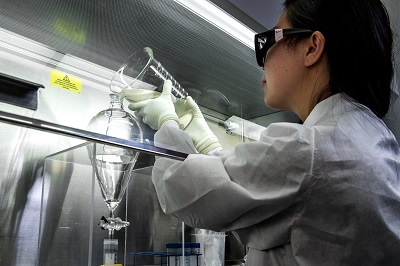Before applying for D-class medical device registration in Malaysia, manufacturers must thoroughly prepare to ensure compliance with the Malaysian Medical Device Authority (MDA) regulations. Below are the critical preparatory steps:
1. Confirm Device Classification
- Verify Device Classification: Ensure that the medical device is correctly classified as a D-class device (high-risk). Misclassification can lead to delays. Check the MDA classification guidelines or consult a regulatory expert to confirm the risk level.
2. Establish a Quality Management System (QMS)
- ISO 13485 Certification: Implement and maintain a Quality Management System (QMS) compliant with ISO 13485, which is a requirement for medical device manufacturers. This certification demonstrates that the manufacturer adheres to regulatory standards for quality management throughout the product’s lifecycle.
- QMS Documentation: Ensure all QMS documentation, including manuals, procedures, and records, are complete and up to date.
3. Prepare Technical Documentation
- Device Description and Specifications: Compile a detailed description of the device, including its components, materials, and intended use.
- Risk Management File: Develop a Risk Management Report based on ISO 14971, demonstrating how risks associated with the device have been identified, mitigated, and managed.
- Clinical Evaluation: Gather clinical evidence supporting the safety and performance of the device. This may include clinical trial data, post-market studies, or literature reviews.
- Biocompatibility and Performance Testing: For devices that come into contact with the body, include biocompatibility testing (e.g., per ISO 10993) and other performance test data (e.g., electrical safety, sterility, etc.).
- Software Validation (if applicable): For software-driven devices, provide documentation on software validation and compliance with IEC 62304.
4. Appoint an Authorized Representative (AR)
- Local Representation: If the manufacturer is based outside Malaysia, they must appoint a Malaysian Authorized Representative (AR) to manage registration, communications, and post-market obligations with the MDA.
- License: Ensure that the AR holds a valid Establishment License from the MDA.
5. Engage a Conformity Assessment Body (CAB)
- Select a CAB: Identify and engage a licensed Conformity Assessment Body (CAB) to assess the device’s conformity to Malaysian regulations. The CAB will review the technical documentation and verify that the device meets the necessary safety and performance standards.
6. Prepare Labeling and Instructions for Use (IFU)
- Labeling Compliance: Ensure the device’s labeling complies with Malaysian regulations and ISO 15223-1 standards. Include essential information like device name, intended use, warnings, and manufacturer details.
- Instructions for Use (IFU): The IFU must be clear and include detailed guidance on using the device safely. It must also comply with Malaysian regulatory guidelines.
7. Plan for Post-Market Surveillance (PMS)
- Post-Market Surveillance Plan: Develop a Post-Market Surveillance (PMS) plan to monitor the device’s performance after it enters the market. This plan should include mechanisms for adverse event reporting, complaints management, and corrective actions.
- Vigilance System: Establish a system for reporting serious incidents or adverse events to the MDA as part of your post-market responsibilities.
8. Conduct a Pre-Submission Gap Analysis
- Internal Review: Conduct an internal review or hire a third-party consultant to perform a gap analysis. This will identify any missing or non-compliant elements in your technical documentation or quality processes, allowing you to address any gaps before submitting your application.
9. Obtain Clinical Data (if applicable)
- Clinical Trials: For innovative or high-risk devices, conduct clinical trials according to ISO 14155. The clinical data will support the device’s safety and effectiveness.
- Clinical Evaluation Report: Prepare a clinical evaluation report summarizing all available clinical evidence that demonstrates the device’s performance and safety.
10. Check Regulatory and International Standards Compliance
- Adhere to International Standards: Ensure compliance with relevant international standards such as ISO 13485, ISO 14971, ISO 10993 (for biocompatibility), IEC 60601 (for electrical safety), and ISO 14155 (for clinical investigations).
- Malaysian Regulations: Ensure compliance with local Malaysian regulations under the Medical Device Act 2012 (Act 737) and associated guidelines.
11. Register with MeDC@St
- Online System Registration: Create an account on the MeDC@St online system, which is the official platform for submitting medical device registrations in Malaysia. Familiarize yourself with the system’s functionality and submission process.
12. Plan Budget for Registration Fees
- Application Costs: Prepare for the costs involved in the registration process, including application fees, CAB fees, testing costs, and consultant fees (if required). These costs vary depending on the complexity and type of the device.

Contact Us:
Whatsapp or Wechat:+86 15816864648;email address:hito.lin@grzan.cn
.png)
.jpg)

.png)

.png)